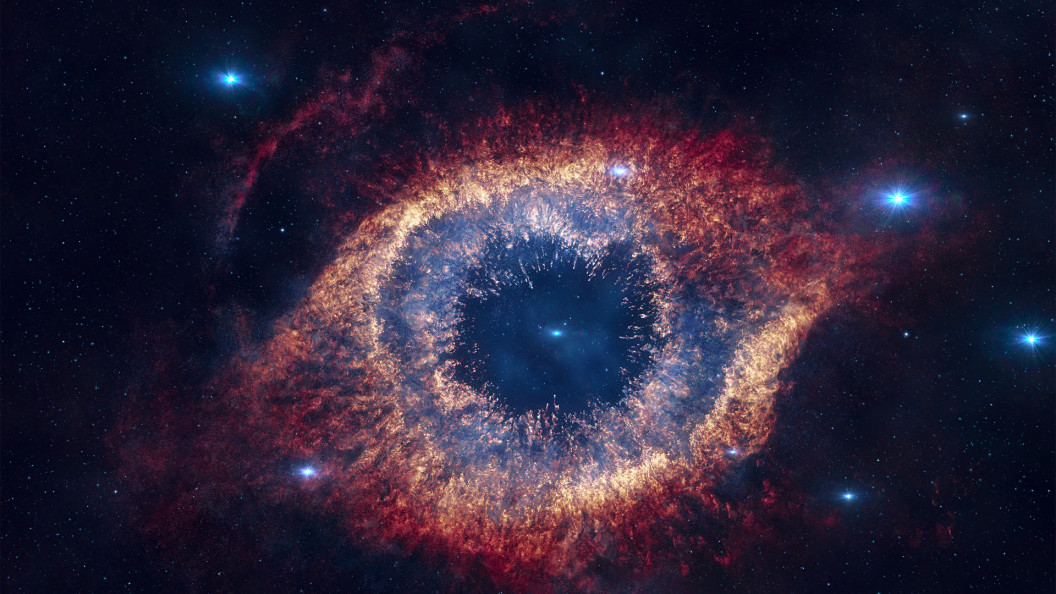- Science News
- Featured news
- Five articles you need to check out on the future of astronomy and astrophysics
Five articles you need to check out on the future of astronomy and astrophysics
By Deborah Pirchner, Frontiers science writer

Image: Shutterstock.com
From uncovering the long-standing mysteries in extra-galactic astrophysics to understanding the properties of the sun’s outer atmosphere, astronomy research aims to help us understand what surrounds us. Frontiers highlights some of the top astronomy articles we have published recently.
In a field as vast as space itself, cutting-edge work may be concerned with particles so small they are invisible to the human eye. Similarly, discoveries may be about whole galaxies. Those new findings, as well as advances in the theory, experiment, and methodology enable us to gain a better understanding of outer space.
These five articles published recently as part of the Frontiers research topic ‘Horizons in Astronomy and Astrophysics’ cover important topics at the forefront of astronomy.
Some Notes About the Current Researches on the Physics of Relativistic Jets
Relativistic jets are powerful plasma jets emitted at the speed of light by black holes of some galaxies, massive stars, and neutron stars. In a review article published in Frontiers in Astronomy and Space Sciences, Italian researchers provided an effective critical review about one of the most long-standing mysteries in extra-galactic astrophysics: the origin of these ejections from the centers of galaxies.
To do so, they critically analyzed some recently published highlight papers on relativistic jets. They found that many erroneous or outdated sources need to be reclassified. This time-consuming work is necessary to avoid studying and drawing fake conclusions on biased samples.
Article link: https://www.frontiersin.org/articles/10.3389/fspas.2021.794891/full
Synthetic Approaches to Complex Organic Molecules in the Cold Interstellar Medium
So far, scientists have detected more than 250 organic molecules in the interstellar clouds from which stars and planets are ultimately formed.
In a review article published in Frontiers in Astronomy and Space Sciences, US researchers focused on the diverse suggestions made to explain the formation of polymer-like complex organic molecules in the low-temperature interstellar medium, which is the matter existing in the space between star systems and galaxies.
They concluded that at present it appears as if the granular approaches are slightly more efficient than gas-phase reactions to produce these molecules in the cold regions of interstellar clouds. However, they also point to the need for more research to confirm this hypothesis.
Article link: https://www.frontiersin.org/articles/10.3389/fspas.2021.789428/full
High Accuracy Molecular Line Lists for Studies of Exoplanets and Other Hot Atmospheres
So far, astronomers have positively identified almost 5,000 exoplanets and many more candidate planets await confirmation. Scientists aim to characterize these planets through their atmospheres and surfaces called planetary spectra.
UK researchers recently published a review article in Frontiers in Astronomy and Space Sciences in which they reviewed the status of available molecular spectroscopic data for studies of exoplanet atmospheres and the atmospheres of other astronomical objects hotter than the Earth such as brown dwarfs, cool stars, and even sunspots.
After reviewing the available spectroscopic data for characterization of exoplanet atmospheres, they stress that complete and highly accurate molecular spectroscopic data is essential to detect molecular species in exoplanet atmospheres.
Article link: https://www.frontiersin.org/articles/10.3389/fspas.2021.795040/full
Toward Accurate Formation Routes of Complex Organic Molecules in the Interstellar Medium: The Paradigmatic Cases of Acrylonitrile and Cyanomethanimine
One of the theories about the emergence of life on Earth is that prebiotic matter came to Earth on asteroids, comets, and meteorites. To prove this thesis’ reliability, a complete census of the molecules populating the interstellar medium and an understanding of how those molecules were synthesized in the harsh interstellar conditions, is necessary.
Now, researchers in Italy published a perspective article in Frontiers in Astronomy and Space Sciences that provides new information about important reactive channels operative in different regions of the interstellar medium and in the atmospheres of exoplanets.
Article link: https://www.frontiersin.org/articles/10.3389/fspas.2021.814384/full
Multi-Scale Variability of Coronal Loops Set by Thermal Non-Equilibrium and Instability as a Probe for Coronal Heating
Solar coronal loops are the building blocks of the solar corona, the outmost layer of the sun’s atmosphere. Parts of the sun’s corona reach millions of degrees; however, researchers still debate how the magnetic energy is dissipated to generate such temperature.
In a recently published review article in Frontiers in Astronomy and Space Sciences, an international team of researchers discussed these challenges and a new approach into inferring coronal heating properties.
Differentiating between global and local approaches to coronal heating behavior, they concentrated on the former. However, they also established a link to local processes, thereby providing a window of opportunity for advancing theories concerning this approach.
Article link: https://www.frontiersin.org/articles/10.3389/fspas.2022.820116/full
REPUBLISHING GUIDELINES: Open access and sharing research is part of Frontiers’ mission. Unless otherwise noted, you can republish articles posted in the Frontiers news site — as long as you include a link back to the original research. Selling the articles is not allowed.







